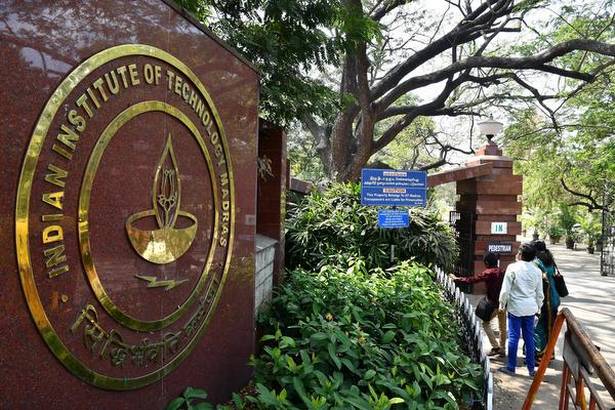Data analytics has proved itself in many different realms. It is also being effectively used to access the students’ performance and helping teachers in the classroom for adopting an adaptive teaching policy for their students.
Teachers have always been involved in dealing with collecting data since the earlier times. From collecting marks, attendance to analysing every student during the result day, they have been attached to data even the advent of complex technology was not popular.
In this article, we shall discuss the ways in which teachers can further use the power of data to assess students and their work in the classroom using the power of analytics.
Data Analytics In Education
In many organisations, schools and colleges, teachers have an unmanageable student-related data to handle. Each of the students has a distinct set of qualities and learning abilities and even wider range of socio-economic backgrounds. The teacher also has to figure out what data must be collected for a particular teaching policy, as that is one of the major pillars in developing study plans.
The education system in India is very biased. It has a common structure for every kind of student in the class when each student has a different learning capability. Everyone is subject to the curriculum that is meant for one kind of a group, but not every student has the same potential to study. The study system is not personalised to the potential and need of every individual student.
With the advancement in data analytics and technology, teachers can be empowered to do much more than what they do now to access the students and make the best use of their opportunity as educators.
How Data Analytics Can Be Used In The Education Sector
Statistical Models: They can be used to forecast the grades of students in the class. Based on certain parameters collected, if the model generates that the student will have a poor CGPA then the model can generate a warning to the instructor indicating that the student will have to work harder to reach the desired mark. The teacher can know what a student is weak in what subject and implement study plans for him accordingly.
Judging Panels: During interviews of the students to schools and Universities, the judging panel can model the student’s performance at the entry test to know if he/she has the potential since these entry tests and CGPAs would have a very high correlation. They may also record absentee rates and study how that affects a performance of all these students using models.
Dropout Rate: A lot of students in different parts of the world drop out of schools and colleges because of various reasons. Predictive models help in evaluating the risks of student dropouts using data analysis and in turn help in taking precautionary measures against it.
Virtual Interview: There is also an AI-based evaluation virtual interview platform that mimics an actual face to face interview. It can be used to automatically evaluate the body language of the candidate. The same technique can be used in classrooms to examine who in the classroom is paying proper attention, who is not and who is pretending.
Cloud: Teachers may leverage the use of cloud technology to have a maximum access to study material to students. The technology can also encourage independent learning and students can take an ownership of their learning and learn from even hours outside of school. University of Michigan uses a tool called E2Coach automatically sends its students personalized course performance messages based on a continually updated algorithm.
Use Cases
Random Forest (RF), Logistic Regression (LR), Support Vector Machines (SVM) and Decision Trees (DT) are some models that have already been used in this effort of using analytics in classrooms worldwide.
IBM has its own project that has been using analytics and helping schools succeed. The University of Florida has also been using this platform to extract the student data and use it to monitor and predict their student performance. Finger Lakes Community College and The Keller Graduate School of Management have already adopted the IBM Analytics platform to track their students and both the institutes have seen a rise in the performance of their students.
Georgia State University (GSU) mining the student data to identify courses in which they showed a poor performance and created a supplemental instruction program to help with those courses. By doing this, they found that its graduation rate went up from 32% to 54% between the year 2003 and 2014, on adopting data to solve issues of retention and course completion.
Arizona State University’s (ASU) maths department has adopted a system called ‘adaptive learning’ to improve their student performance. Their systems collect information of students like marks, strengths, weaknesses and even measures moments of hesitation. ASU’s eAdvisor integrates learning management system information about student activity with registration data and student background characteristics and they are notified when a student gets off track so that they can help them before anything major happens. Adopting this system, ASU has improved its student success rate and its dropout rate has decreased to about 54%. The University of Nevada also collects student learning and navigational patterns to analyse past and present data and enhance the student experience.
The Downside Of Classroom Analytics
Although an early prediction of a student scorecard might be useful in deciding regarding enrolling the student, it would be undeserved to take a final call based on this. A lot of factors can lead to the downfall or upgrade of student’s grade. If the student is motivated and hard working after being admitted, it is unfair for him to have been judged just based on a poor performance prediction that might have generated during his admission based on a statistical model. On the other hand, a student, whose model predicted gives excellent CGPA prediction might not be able to work that hard or face other difficulties and unexpected life changes affecting his curriculum.
Conclusion
If used for all the right reasons, data analytics will a hundred percent have its usefulness in evaluating student performance in classrooms. It is a great tool for teachers to evaluate students so that extra attention can be given to those from an early intervention, thereby reducing student retention rate. Data analytics has a great potential in this solution, lead to an improved student achievement outcome, give students the competitive edge and empower the teachers to be the best educators.


















































































